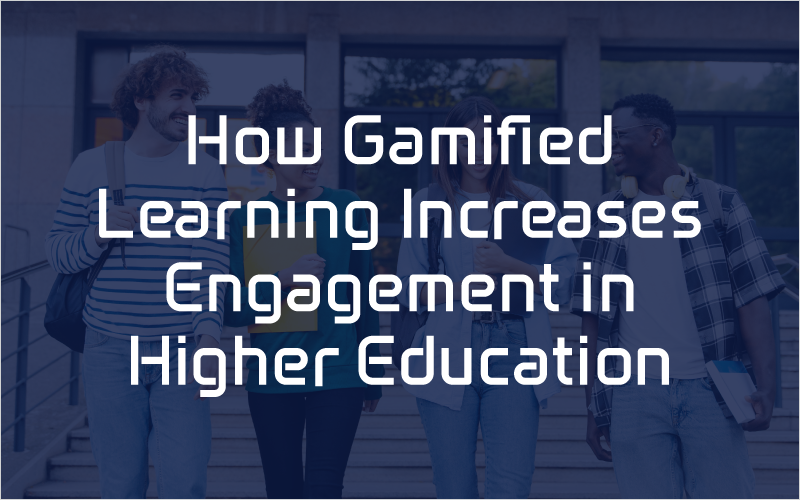Keeping learners engaged can be a challenge. Distractions are everywhere, and traditional lectures often struggle to hold attention. Why? Because people crave interaction, participation, and a sense of agency in their learning experience.
Rather than passively absorbing information, learners thrive when they are actively involved. Research shows that incorporating game-based learning —an approach that integrates elements of play, competition, and collaboration—enhances engagement and improves retention across all industries and age groups.
So, how can organizations leverage gamified learning to create more dynamic and impactful training experiences? There are a number of use cases and success stories that we’re reading about—gamified virtual campus tours, gamified scholarship challenges, and so much more. In this article, let’s explore some areas where implementation is easier and results are immediate.
Game-based Learning: Enhancing Microlearning, Feedback, and Team-Building
As Gen Z continues to enter the workforce, organizations and educational institutions must adapt to their learning preferences. As true digital natives, this generation is highly receptive to technology-driven education solutions—especially gamification.
One defining characteristic of Gen Z is their short attention span, estimated at around eight seconds. To keep them engaged, microlearning—breaking complex topics into small, digestible lessons with spaced repetition—has proven highly effective. Gamified learning aligns perfectly with this approach, offering short, interactive experiences that reinforce key concepts in just a few minutes.
Consider how most people react to a lengthy video—many will hesitate to watch if it’s over two minutes. Now, imagine sitting through a disengaging, hour-long lecture. For today’s learners, this can feel overwhelming. Gamified learning breaks up long training sessions with dynamic, interactive experiences that boost engagement, improve retention, and foster collaboration.
By integrating games into learning strategies, organizations can create more effective, engaging, and results-driven training experiences.
Feedback and Gamified Learning
GenZ – along with their slightly older millennial counterparts – crave constant feedback. According to one survey, 74% of millennials feel “in the dark” about their job performance due to a lack of feedback. Having only a yearly or quarterly review isn’t enough for these generations that want the feedback cycle to be constant.
What can provide a more casual, interactive, and more frequent feedback structure? A gamified learning structure. Gamified learning can help both you and your students increase communication and make sure the experience is meaningful and constructive.
So, instead of students submitting work, grading it, sending it back to the student, and having that process take days or weeks, games make feedback instant. If a student selects the incorrect answer in a gamified setting, the response is immediate. The game can provide constructive feedback and give the student a chance to try again. Using gamified learning gives students a safe space to fail, adjust, and try again in seconds or minutes.
Understanding this desire for feedback can go a long way in getting students to engage in your lesson plan. Take steps to gamify your classroom, and you’ll be on your way to improving engagement through immediate feedback
Enhancing Teamwork and Problem-Solving Through Gamification
Effective teams don’t just work alongside each other—they collaborate to achieve a shared goal. While group work often involves individuals working independently, true teamwork requires communication, coordination, and problem-solving. Gamified learning provides a structured environment where participants must actively engage, strategize, and collaborate to succeed.
By incorporating games into training and education, organizations can create clear challenges, rules, and rewards that encourage teamwork and critical thinking. Through real-time feedback, teams can refine their strategies, adapt to challenges, and improve problem-solving skills dynamically and engagingly. Additionally, competitive elements—such as leaderboards or incentives—motivate participants and reinforce learning outcomes.
Whether used in remote or in-person settings, gamified experiences foster a sense of belonging and camaraderie among participants. For example, an MBA program successfully implemented interactive outdoor games to teach soft skills, teamwork, and leadership. The results? A significant increase in communication and collaboration skills—key competencies for building high-performing teams.
Rather than relying on passive lectures or reading assignments, interactive, team-based learning experiences drive deeper engagement and more meaningful skill development. Game-based learning transforms teamwork from a theoretical concept into an immersive, hands-on learning experience.
Games and Retention: The Power of Repetition and Engagement
Research shows that gamified learning is not only effective for engagement but also for retention. In a study analyzing 1,000 learning games, the average session lasted just six minutes—perfectly aligning with microlearning principles. However, learners didn’t stop at one session. On average, they repeated the games 2.9 times, reinforcing their understanding with each attempt. Most notably, knowledge retention improved by 64% from the first to the third round of gameplay.
Games provide a safe, low-pressure environment where learners can revisit content repeatedly—an essential strategy for overcoming the “forgetting curve.” Active engagement in the learning process significantly improves retention, far more than passive methods like lectures or static presentations. Discussion, practice, and even teaching others are among the most effective ways to reinforce knowledge, and gamified, team-based learning naturally incorporates these elements.
Beyond repetition, gamified learning enhances retention by triggering emotional responses. A study comparing training methods for aviation safety professionals found that those who trained using virtual reality (VR) simulations—such as those provided by CenarioVR—demonstrated higher knowledge retention than those trained with traditional safety cards. The immersive experience created a stronger emotional connection, making the information more memorable and easier to recall.
By integrating gamification into training programs, organizations can create highly engaging, interactive learning experiences that drive deeper understanding and long-term retention.
Gamify Online Learning
When everyone moved to virtual settings because of the pandemic, many professors realized that traditional teaching methods were not effective. It’s hard enough to keep students engaged in a lecture in person, it can be near impossible when they’re online with numerous distractions within arm's reach.
Looking to tackle this problem, MIT’s Sloan School of Management underwent extensive research to show just how effective gamified education techniques can be at combating the engagement issues that come with online education.
The head of the study, Professor Lo took some lessons from video game streamers to boost engagement. He used a countdown to announce the start of class, a variety of tools on Zoom like polls, chat, and breakout rooms, and switched up tasks and screens every fifteen minutes to make sure students stayed engaged. This “change in scenery” also helps with the Zoom fatigue we all struggle with.
Leveraging True Gamification in Higher Ed Teaching
Using games in your classroom is not the same as gamifying your classroom. First, gamification is the application of gameplay elements (points, competition, rewards, etc.) to real-world situations. So while fun, playing bingo in your class is not the same as true gamified learning.
Incorporating game mechanics goes a long way to increasing engagement and gamifying education. Using things like game levels gives a sense of accomplishment, points give something to earn and possibly use as currency, and a leaderboard encourages healthy competition.
Maybe the best game mechanics, however, are badges or achievements. Typically, in classrooms, motivation centers around securing a good grade or the fear of receiving a bad one. Of course, grades are important and necessary, but they might not be the best motivating factor for many students.
Instead of only using grades, try adapting a badge or awards system to help encourage and reward behaviors. Something as simple as the “perfect attendance badge” or “answered a question in every class badge” can further drive engagement and ownership in a student’s educational journey and give students achievements in things that aren’t just grades and assignments. Furthermore, students can share these achievements with the class and continue the trend of encouraging interaction. Plus, seeing their fellow students rack up points, rewards, and badges might motivate them to get a move on that homework assignment and get on the leaderboard!
Gamification in the College Admissions and Orientation Process
Another aspect of gamification that universities are realizing is gamifying the admissions process. Applying to schools is arduous, can feel defeating, and is stressful. Once accepted, it’s time for students to celebrate and be excited about their new home.
Nazareth College in Rochester, NY, is using a points-based system for accepted students that helps them earn gear, prizes, and other goodies for completing steps in the admissions process. Usually, filling out paperwork – or paying a deposit – isn’t the ideal of fun. However, if students earn points or unlock new paths or “quests” in their pursuit of a degree, that can turn a bureaucratic process into an adventure.
Using a gamified admissions system can help colleges and universities better engage Gen Z and millennial students. Employing gamified techniques in the application and selection process can make it more fun and engaging.
Though most people talk about a gamified classroom, gamification isn’t just for students. Gamified learning increases engagement in all age groups, which can include faculty and staff. Among other things, using games from an organizational standpoint can help provide key data points, improve engagement amongst your staff, and create a positive work culture.
Next time there’s a training session or workshop for faculty and staff, spice it up after it’s finished with a round of JEOPARDY!® to help reinforce the concepts you just presented. JEOPARDY! is a familiar game mechanic, and it helps with that magic word, engagement. Play demo!








